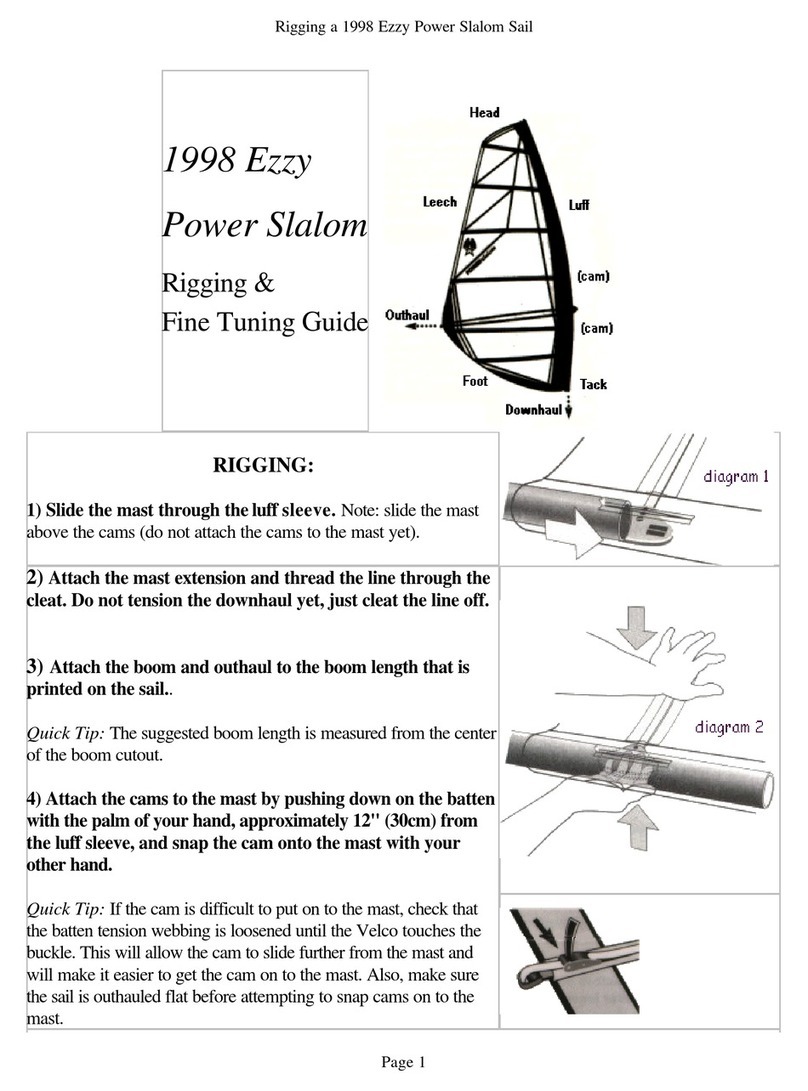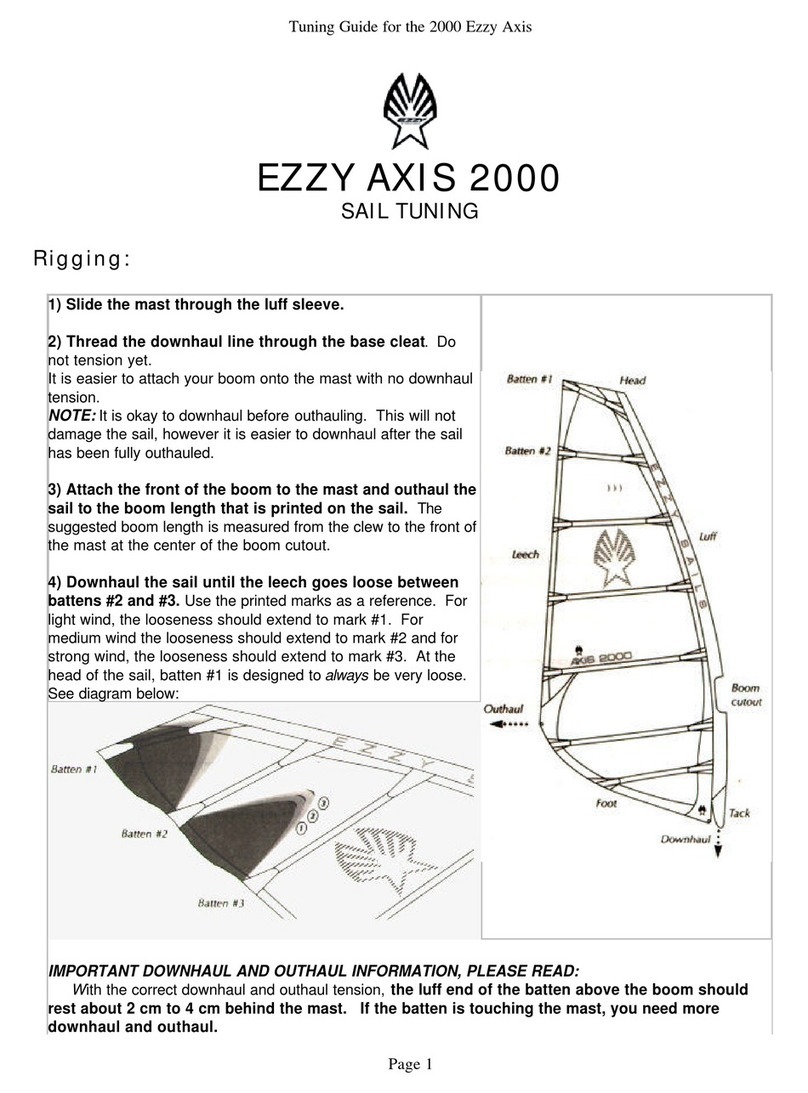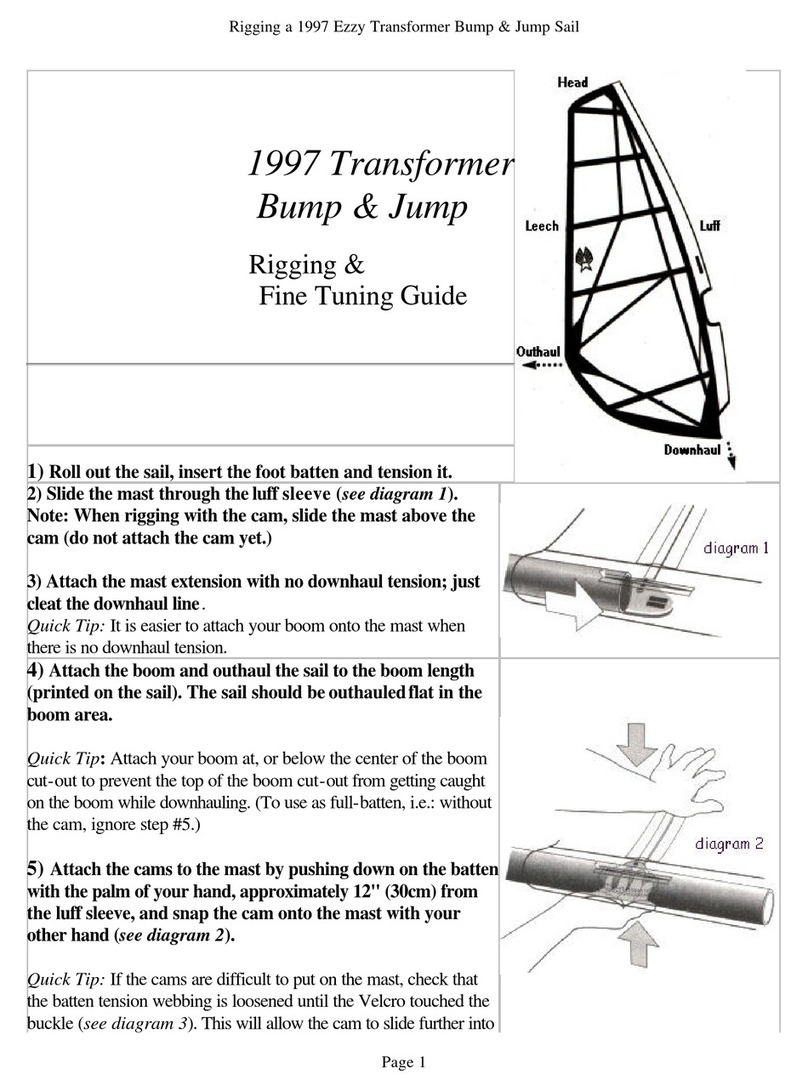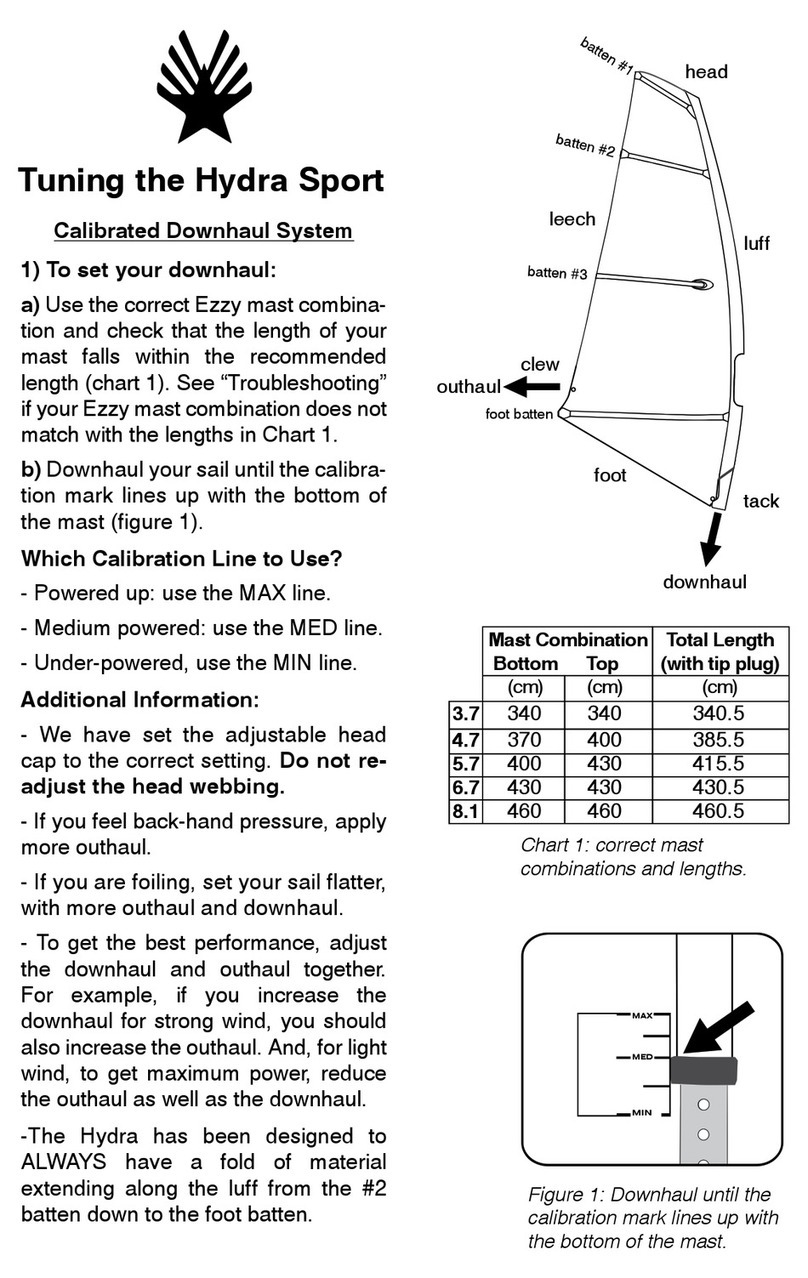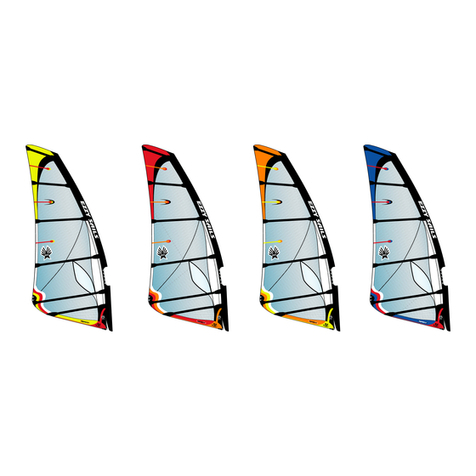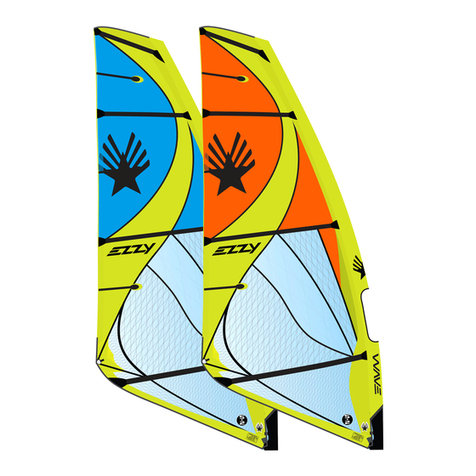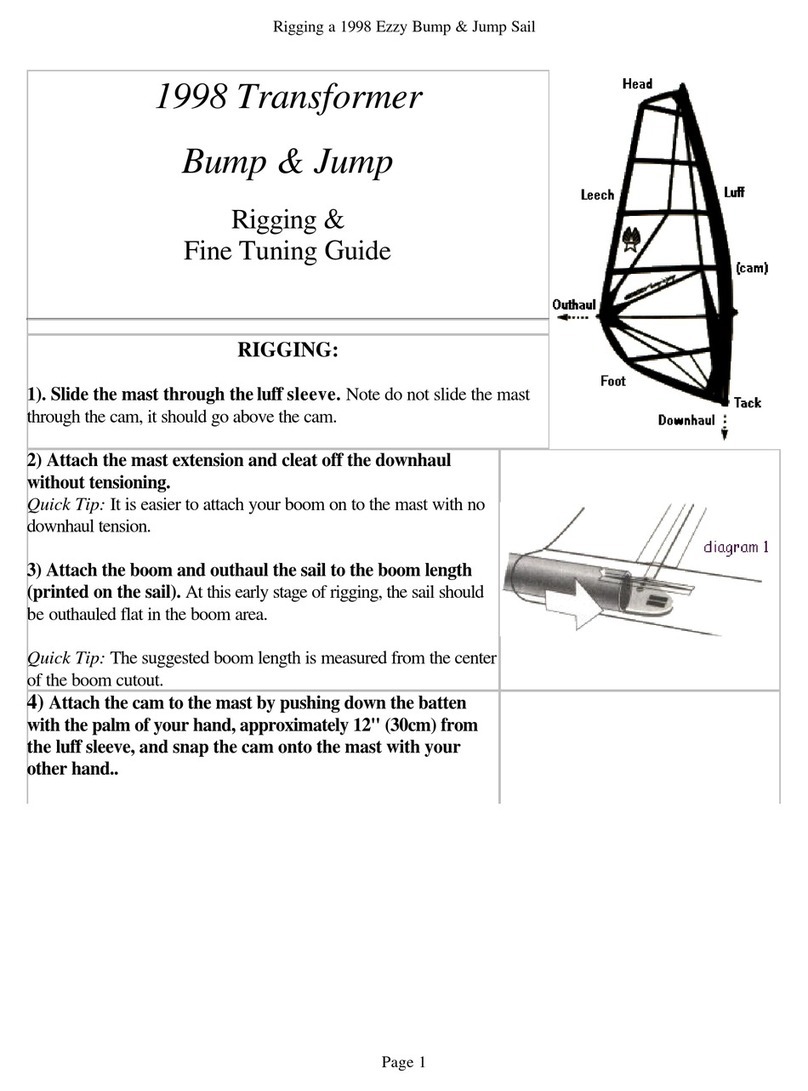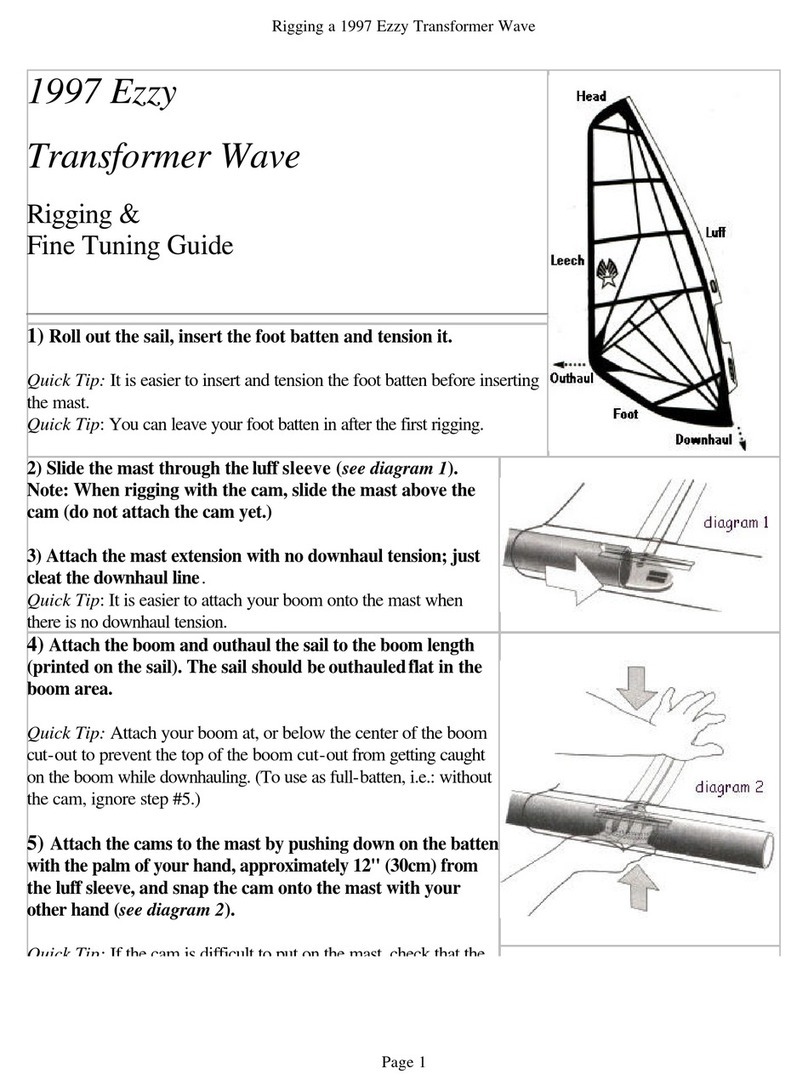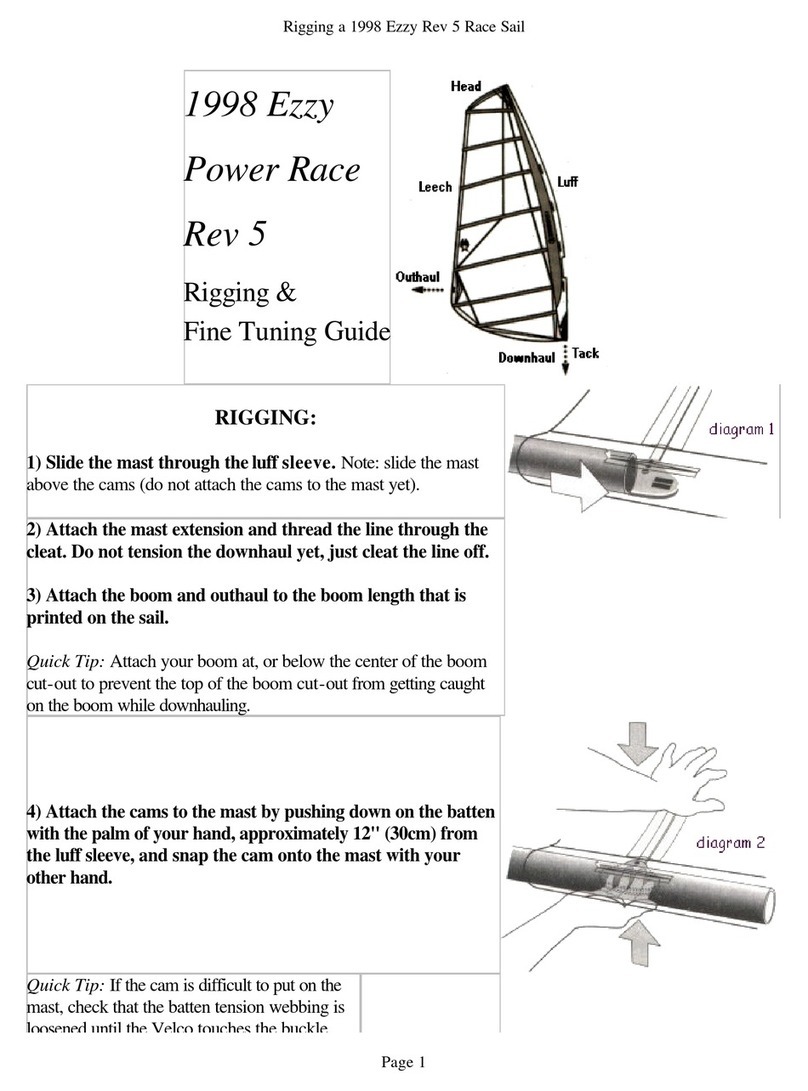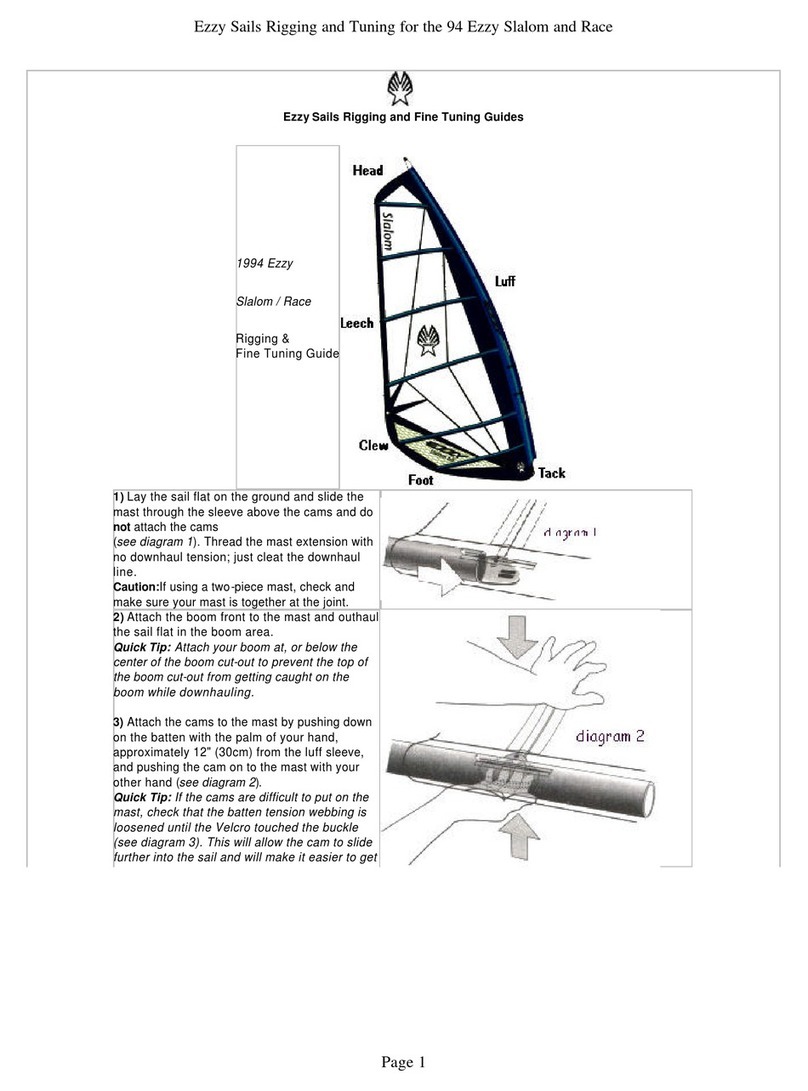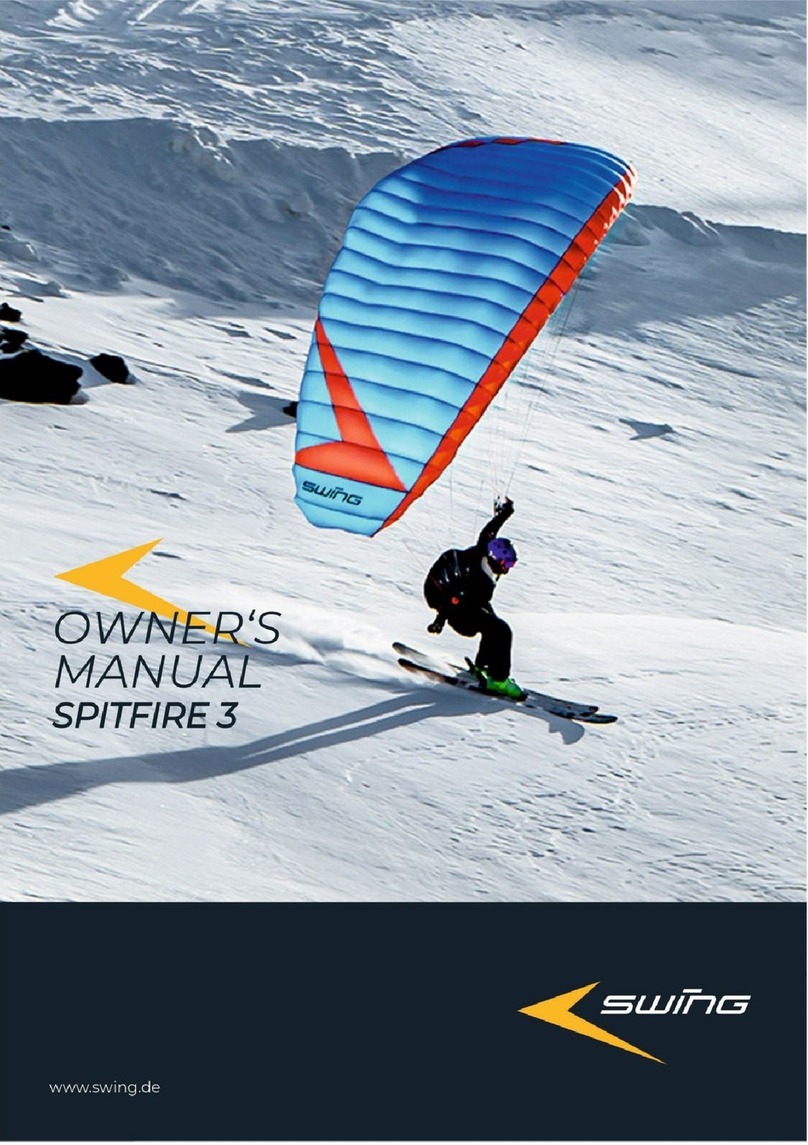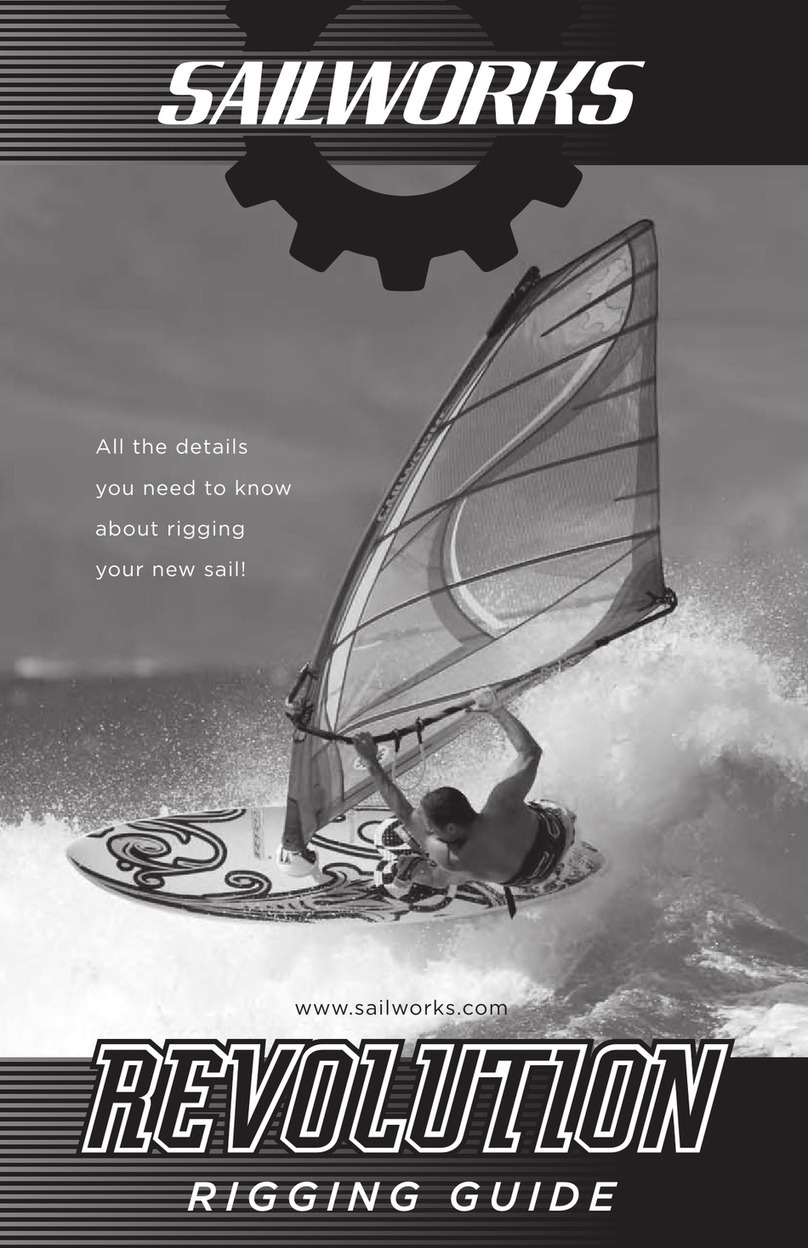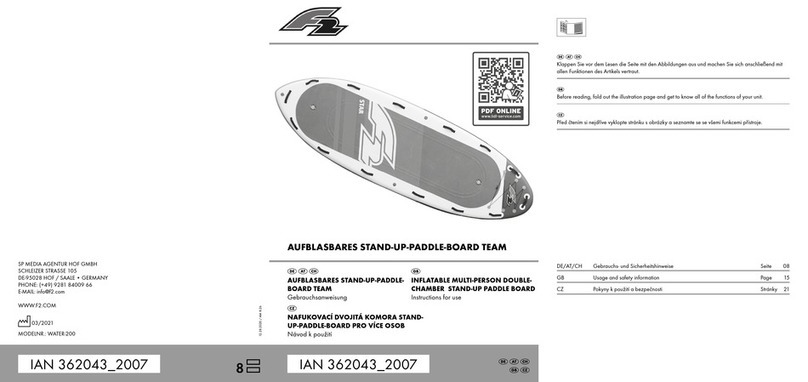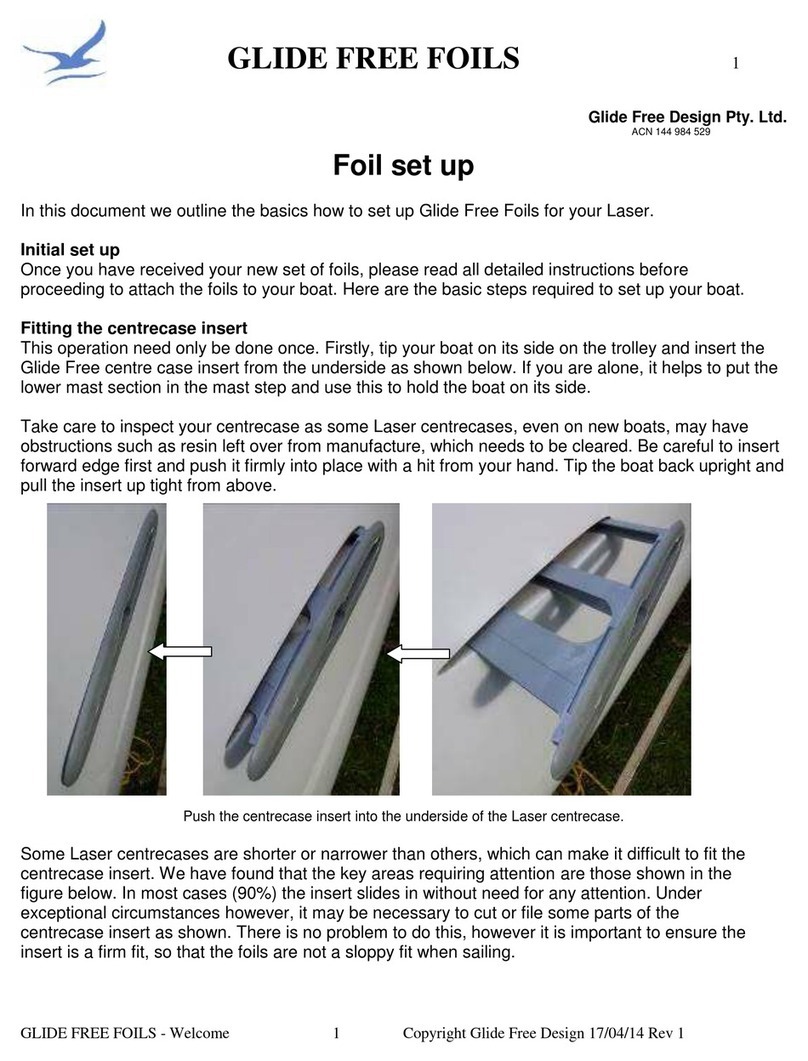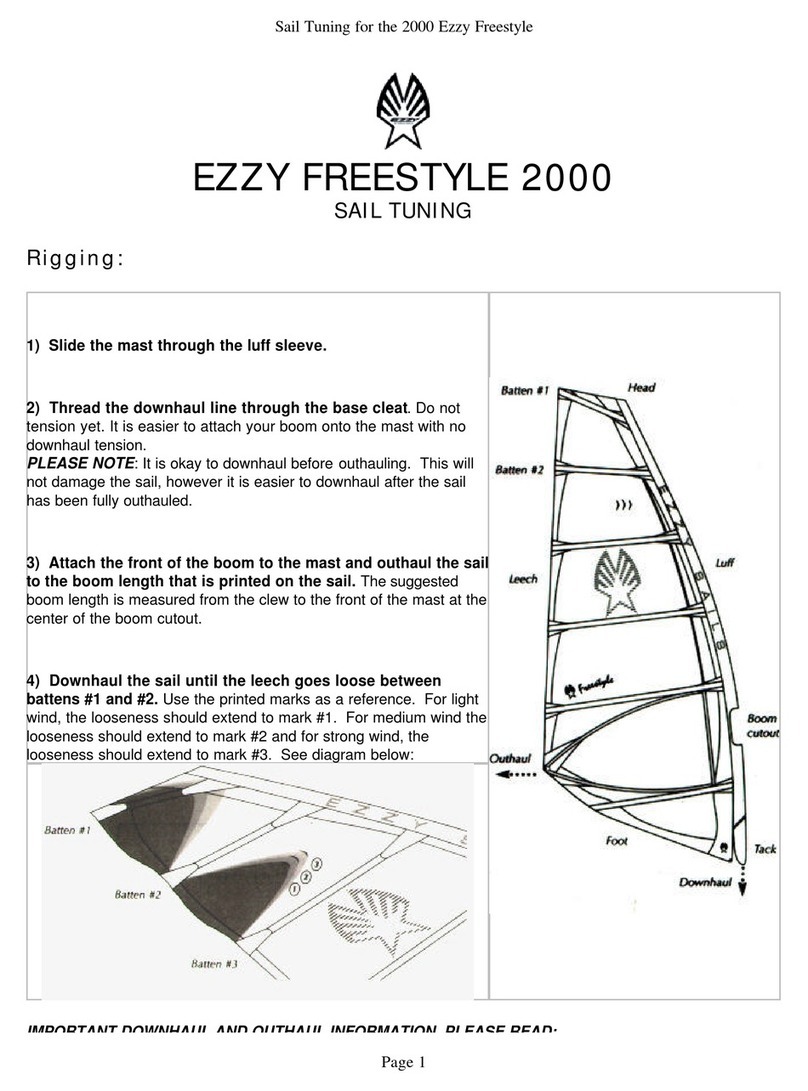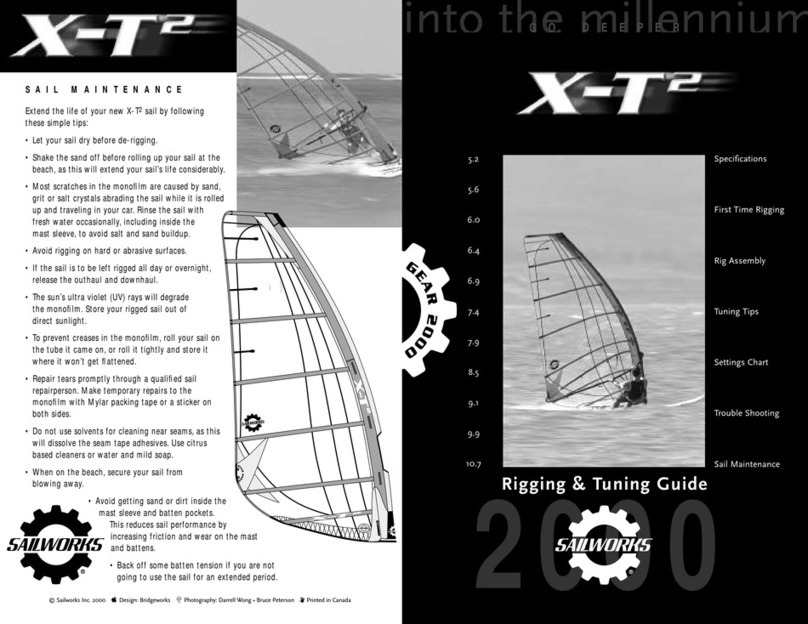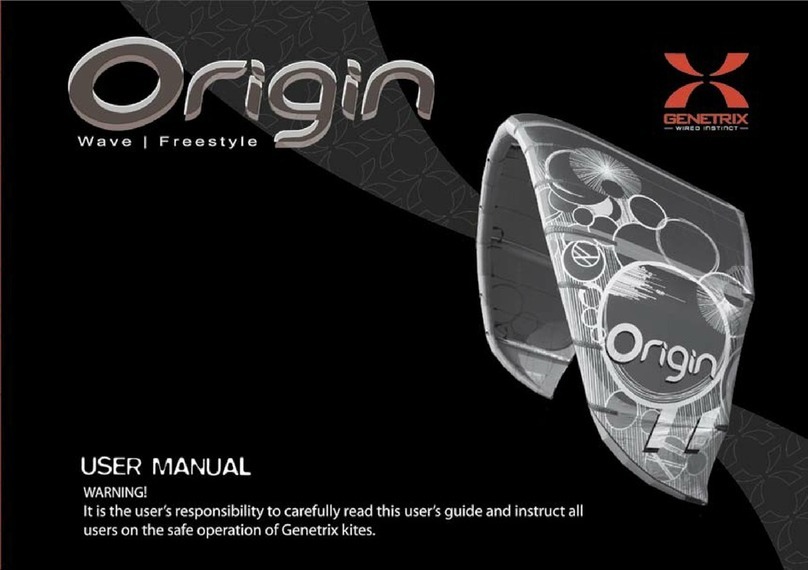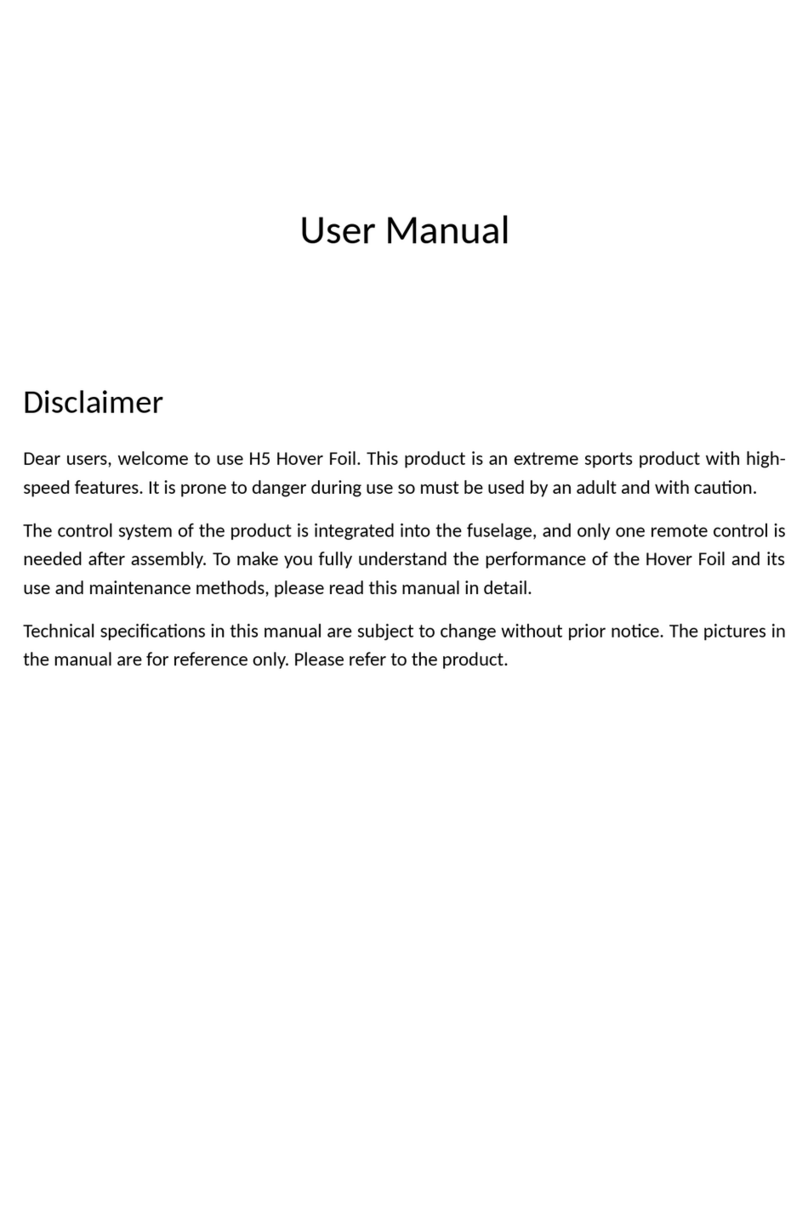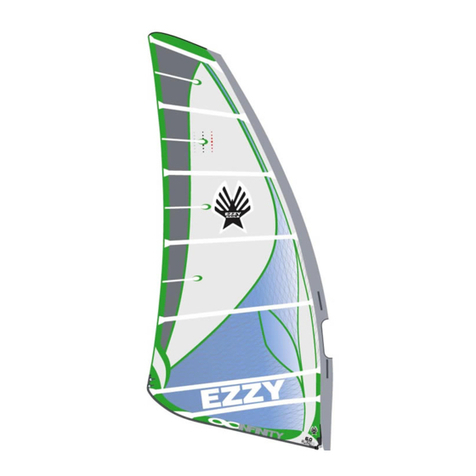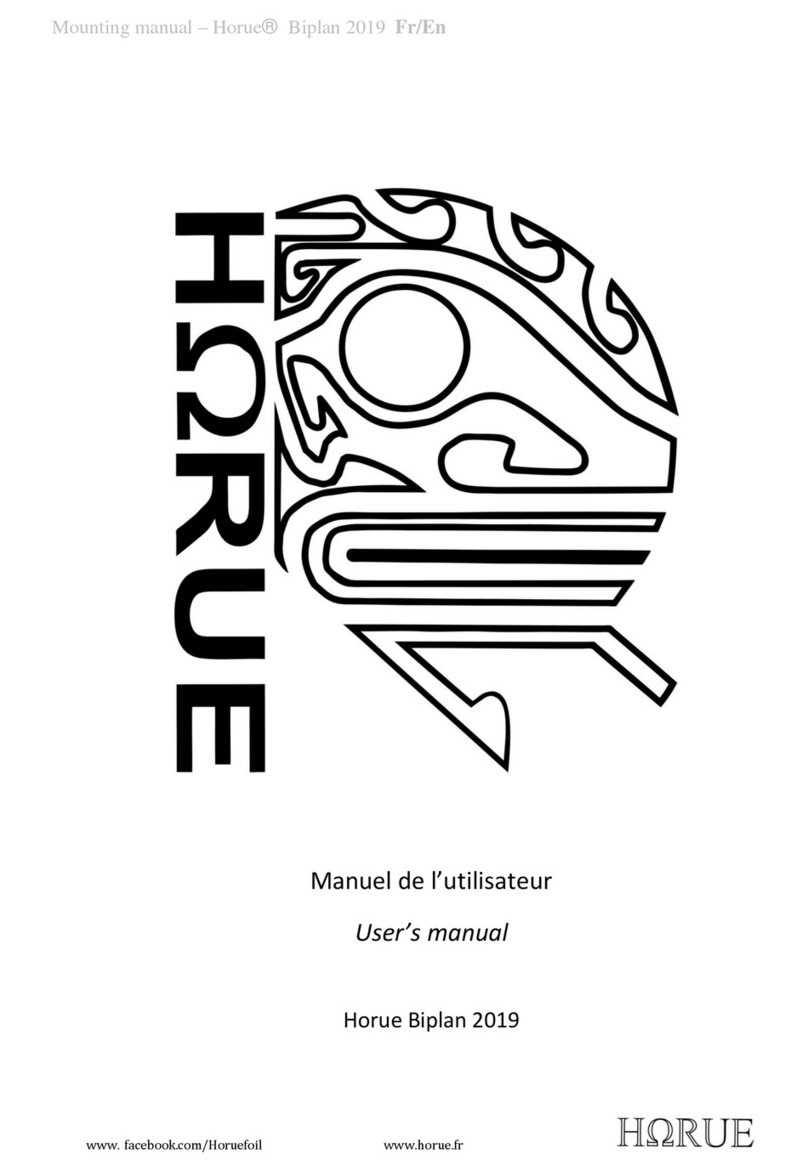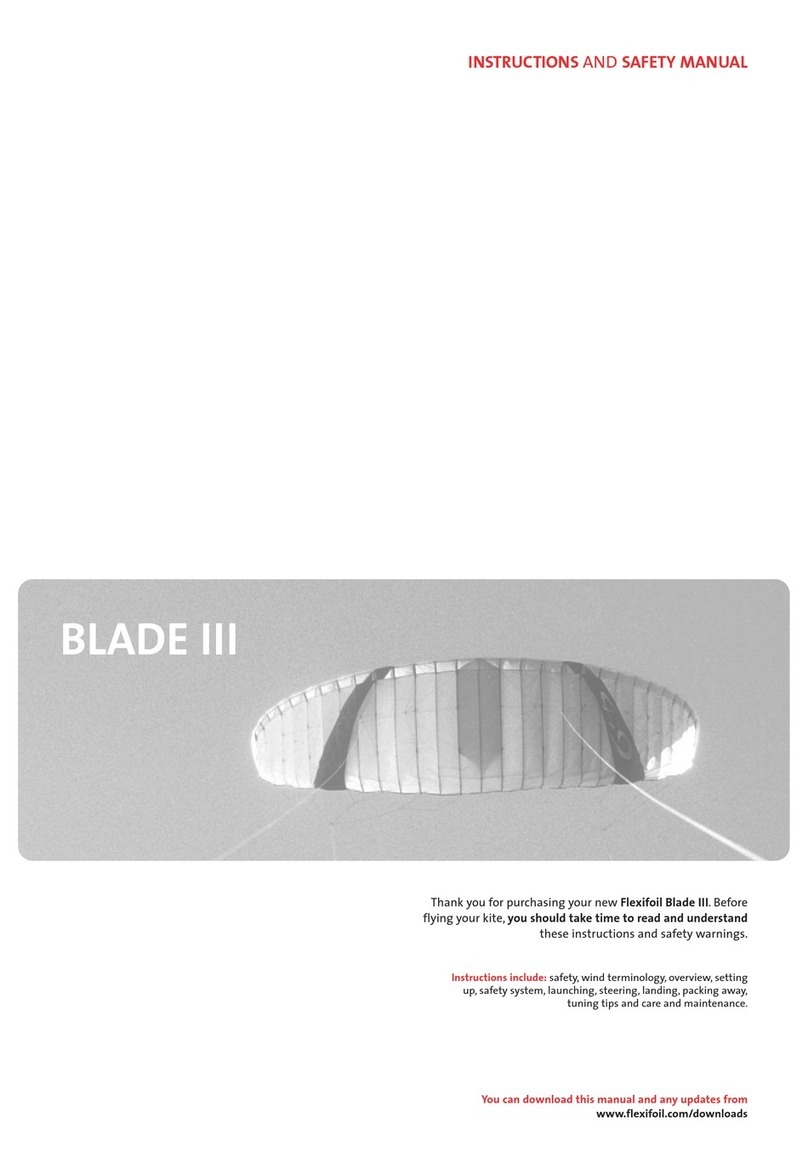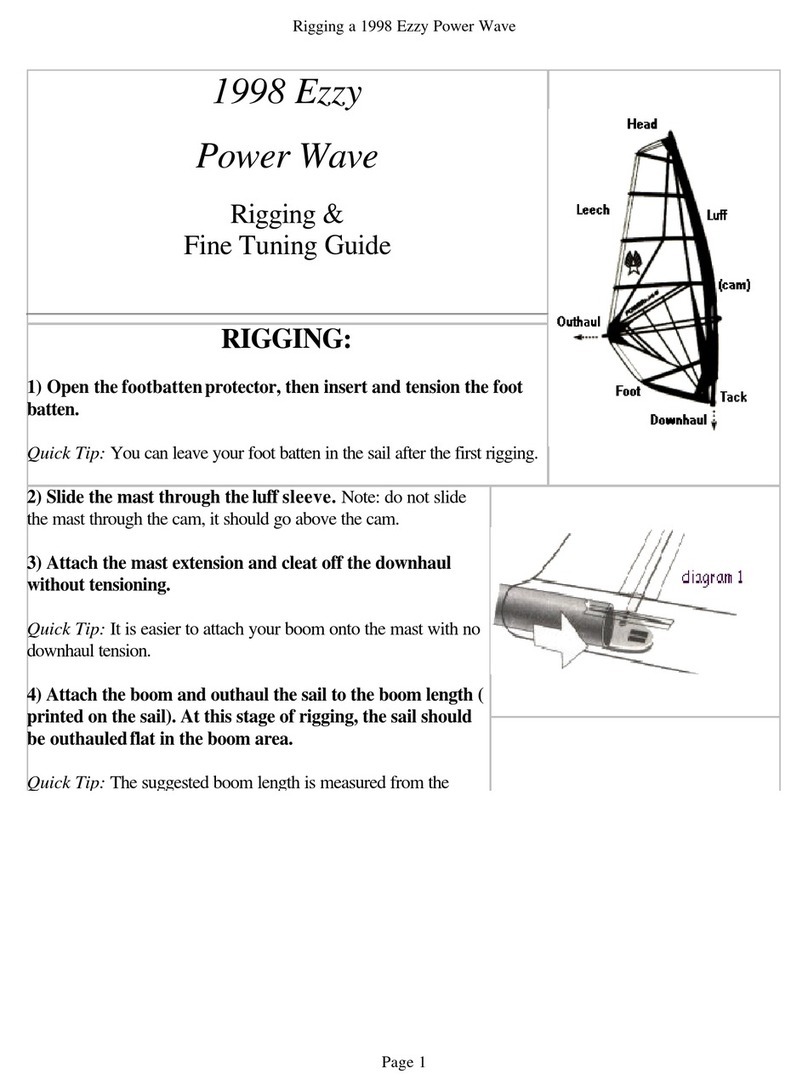
Tuning Guide for the 2000 Ezzy Duo and Duo Plus
5) Downhaul the sail until the leech goes loose between battens #2 and #3. Use the printed marks as a
reference. For light wind, the looseness should extend to mark #1. For medium wind the looseness should extend to
mark #2 and for strong wind, the looseness should extend to mark #3. At the head of the sail, batten #1 is designed
to always be very loose. See diagram below:
Quick Tip-It is possible to over-
tension the cam batten, which will cause the cam not to rotate. A quick check of this can be
done by holding the sail up on land and pumping the sail from both sides of the boom. The cam should rotate smoothly; if it
doesn't, decrease a little batten tension.
buckle. This will allow the cam to slide
further from the mast and will make it
easier to get the cam onto the mast. Also,
make sure the sail is outhauled flat
before attempting to snap the cams onto
the mast.
Opening the zipper will make it easier to
snap the cam onto the mast. But, to
avoid damaging the zipper, be sure to
close the zipper againbefore tensioning
the cam batten.
The amount of downhaul tension will vary for different
wind conditions: A high-wind setting requires more
downhaul tension to loosen the upper leech and give
more twist. In lighter wind, the sail needs less
downhaul for a tighter leech and better low-
For the correct sail rake, the foot edge of the tack
should be no more than 4 inches (10 cm) above the
deck of the board. Always keep your base extension at
its shortest possible setting. If there is not enough
space for downhauling
and you have mast extending
from the top, use the adjustable top to raise the sail up
on the mast rather than extend your base.
6) Now, tension the two camber battens by pulling
on the batten strap while pushing the palm of your other
hand against the batten end-cap. When the camber
battens are correctly tensioned, the sleeve directly in
front of the cam should be tight.
Page 2
